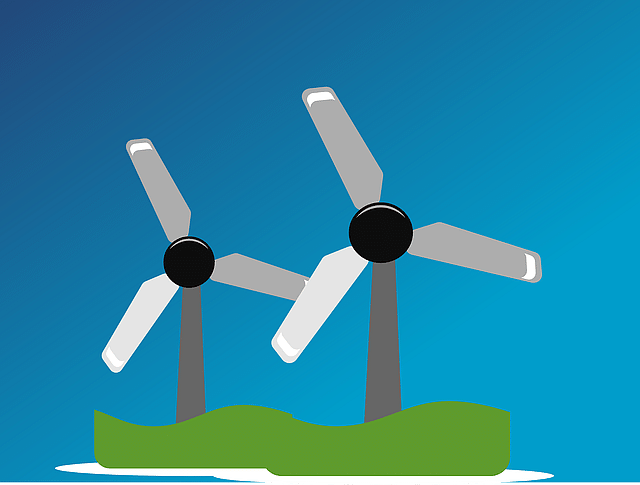News Brief
Explained: Atmospheric Water Generation For Dummies
- When Prime Minister Narendra Modi suggested that wind turbines can be developed to extract water from the air, he was not making an outlandish claim.

(Source: Clker-Free-Vector-Images from Pixabay)
On 9 October (Friday), Congress leader Rahul Gandhi tried to troll Prime Minister Modi over his comment on harnessing wind turbines to extract water from the atmosphere.
Gandhi shared a clip of Prime Minister Narendra Modi speaking about alternate uses of wind turbines during a video interaction with Henrik Anderson, president and CEO of Vestas, a Danish wind energy company, on Wednesday.
In the clip, Modi can be heard saying "... in places where there is higher level of moisture, wind turbines can extract water from the atmosphere and could produce clean drinking water. Thus, wind turbines can produce power and on the backside, suck moisturised air and extract water."
Modi cited the utility of such a mechanism in coastal areas and villages where drinking water was scarce.
Modi then called for research into using wind turbines to extract oxygen from the atmosphere. He said it would be challenging "but if a wind turbine extracts oxygen from the atmosphere... and the market for oxygen is captured, then wind turbines can be used for providing drinking water, oxygen and power supply." Thus, said Modi, a wind turbine could become a "three-in-one" system.
The CEO of Vestas responded enthusiastically to Modi for his suggestions and lauded his "passion" and "excitement".
Rahul tweeted the clip with the caption, "The real danger to India isn’t that our PM doesn’t understand. It’s the fact that nobody around him has the guts to tell him", starting a trolling attack over the comments.
But are PM Modi’s comments outlandish?
The Week reported that almost a decade ago, in 2012, a French company, Eole Water, claimed to have modified a wind turbine to extract water from humid air.
The wind turbine design was called the WMS1000. At the time, Eole Water claimed that a prototype of the WMS1000 was being tested in a desert near Abu Dhabi and was able to produce 62 litres of water an hour.
The device worked first to produce power from the wind as happens traditionally. Then, this power was used to extract water from the moisture-dense air. The air is sucked in through an ‘air blower’ and directed to an electric cooling compressor situated behind the propellers.
This way, the moisture is extracted from the air, condensed and collected. The water thus generated is then transferred through stainless steel pipes, filtered and purified for consumption.
Eole Water had claimed the WMS1000 could produce up to 1,000 litres of water a day, which was enough for a small community of up to 3,000 people.
However, the process is costly.
A 2012 CNN report said that "it costs between €500,000 ($660,000) and €600,000 ($790,000) depending on the location and surrounding conditions to install just one Eole Water turbine".
However, the area continues to be promising with several researchers further exploring the technology. Same is the case with the idea of oxygen extraction through wind turbines, which is more complicated than water extraction.
The idea is to harness wind energy to carry out electrolysis of water to generate hydrogen and oxygen. Researchers in the US and Europe have been conducting research on this for years. The purpose is to generate adequate hydrogen for renewable energy purposes.
If successful, a "three-in-one" wind turbine system could solve the water and energy woes of a community in a sustainable manner with lesser impact on the environment.
Support Swarajya's 50 Ground Reports Project & Sponsor A Story
Every general election Swarajya does a 50 ground reports project.
Aimed only at serious readers and those who appreciate the nuances of political undercurrents, the project provides a sense of India's electoral landscape. As you know, these reports are produced after considerable investment of travel, time and effort on the ground.
This time too we've kicked off the project in style and have covered over 30 constituencies already. If you're someone who appreciates such work and have enjoyed our coverage please consider sponsoring a ground report for just Rs 2999 to Rs 19,999 - it goes a long way in helping us produce more quality reportage.
You can also back this project by becoming a subscriber for as little as Rs 999 - so do click on this links and choose a plan that suits you and back us.
Click below to contribute.
Latest